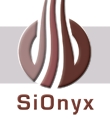Home > Press > SiOnyx Demonstrates Record-Breaking Photosensitivity With New Light Detectors
 |
Abstract:
SiOnyx Inc., in collaboration with the Army Research Office (ARO), has successfully demonstrated pixel-scale detectors with room temperature Detectivity (D*) exceeding 1x10(14) Jones. This represents a full 10x improvement over traditional silicon detectors, setting a record for performance that paves the way for SiOnyx to lead in new sponsored research programs with the Army Night Vision and Electronic Sensors Directorate (NVESD) and Defense Advanced Research Projects Agency (DARPA).
SiOnyx Demonstrates Record-Breaking Photosensitivity With New Light Detectors
Beverly, MA | Posted on June 25th, 2010Dr. A. Fenner Milton, the US Army NVESD's Director noted, "NVESD is interested in approaches to low light level imaging that have the potential for leveraging silicon technology to reduce costs."
SiOnyx is commercializing a fundamentally new semiconductor processing technique that represents a breakthrough in the development of smaller, cheaper, high-performing silicon photonic devices. Based on a novel laser implant method first discovered at Harvard and commonly referred to as 'Black Silicon,' SiOnyx's patented semiconductor process dramatically enhances the performance of light-sensing devices across a range of applications in the consumer, industrial, medical and defense industries. Under the ARO grant, SiOnyx has shown the applicability of its technology to CMOS image sensors and other mass-produced photonic devices used in demanding imaging and photo-detecting applications.
"Signal-to-noise ratio and dynamic range dictate the ultimate performance in any photonic system," said Stephen Saylor, CEO of SiOnyx. "In applications ranging from medical imaging to digital photography, these basic device characteristics underlie the quality of experience. The record-setting results shown in our work with the ARO are astounding and demonstrate once again how SiOnyx's technology platform has the potential to dramatically alter performance in these multi-billion dollar industries."
With the completion of this milestone and resulting performance breakthroughs, SiOnyx is now leading newly sponsored programs with the US Army's NVESD and DARPA that will advance the use of Black Silicon in low light and infrared imaging.
Dr. Nibir Dhar, Program Manager in DARPA's Microsystems Technology Office, added, "High-performance, low-cost, small infrared cameras at room temperature will have significant impact on many aspects of modern war fighting. Black Silicon offers an enabling pathway in low-cost CMOS camera development for near-infrared applications."
####
About SiOnyx Inc.
SiOnyx is a semiconductor materials company serving the consumer, industrial, medical and defense industries. SiOnyx's patented semiconductor process dramatically enhances the performance of light-sensing devices, delivering hundreds of times more sensitivity to light than traditional silicon. As a result, SiOnyx's platform represents a significant breakthrough in the development of smaller, cheaper, high-performing photonic devices in applications ranging from simple light detection to advanced digital imaging, photovoltaics and more.
For more information, please click here
Contacts:
SiOnyx Inc
Cummings Center 100
Suite 244G
Beverly, Ma 01915
Phone: (978) 922-0684
Fax: (978) 922-0647
Copyright © PR Newswire
If you have a comment, please Contact us.Issuers of news releases, not 7th Wave, Inc. or Nanotechnology Now, are solely responsible for the accuracy of the content.
| Related News Press |
News and information
![]() Simulating magnetization in a Heisenberg quantum spin chain April 5th, 2024
Simulating magnetization in a Heisenberg quantum spin chain April 5th, 2024
![]() NRL charters Navy’s quantum inertial navigation path to reduce drift April 5th, 2024
NRL charters Navy’s quantum inertial navigation path to reduce drift April 5th, 2024
![]() Discovery points path to flash-like memory for storing qubits: Rice find could hasten development of nonvolatile quantum memory April 5th, 2024
Discovery points path to flash-like memory for storing qubits: Rice find could hasten development of nonvolatile quantum memory April 5th, 2024
Imaging
![]() Nanoscale CL thermometry with lanthanide-doped heavy-metal oxide in TEM March 8th, 2024
Nanoscale CL thermometry with lanthanide-doped heavy-metal oxide in TEM March 8th, 2024
![]() The USTC realizes In situ electron paramagnetic resonance spectroscopy using single nanodiamond sensors November 3rd, 2023
The USTC realizes In situ electron paramagnetic resonance spectroscopy using single nanodiamond sensors November 3rd, 2023
![]() Observation of left and right at nanoscale with optical force October 6th, 2023
Observation of left and right at nanoscale with optical force October 6th, 2023
Discoveries
![]() Chemical reactions can scramble quantum information as well as black holes April 5th, 2024
Chemical reactions can scramble quantum information as well as black holes April 5th, 2024
![]() New micromaterial releases nanoparticles that selectively destroy cancer cells April 5th, 2024
New micromaterial releases nanoparticles that selectively destroy cancer cells April 5th, 2024
![]() Utilizing palladium for addressing contact issues of buried oxide thin film transistors April 5th, 2024
Utilizing palladium for addressing contact issues of buried oxide thin film transistors April 5th, 2024
Announcements
![]() NRL charters Navy’s quantum inertial navigation path to reduce drift April 5th, 2024
NRL charters Navy’s quantum inertial navigation path to reduce drift April 5th, 2024
![]() Discovery points path to flash-like memory for storing qubits: Rice find could hasten development of nonvolatile quantum memory April 5th, 2024
Discovery points path to flash-like memory for storing qubits: Rice find could hasten development of nonvolatile quantum memory April 5th, 2024
Military
![]() NRL charters Navy’s quantum inertial navigation path to reduce drift April 5th, 2024
NRL charters Navy’s quantum inertial navigation path to reduce drift April 5th, 2024
![]() What heat can tell us about battery chemistry: using the Peltier effect to study lithium-ion cells March 8th, 2024
What heat can tell us about battery chemistry: using the Peltier effect to study lithium-ion cells March 8th, 2024
![]() New chip opens door to AI computing at light speed February 16th, 2024
New chip opens door to AI computing at light speed February 16th, 2024
|
|
||
|
|
||
| The latest news from around the world, FREE | ||
|
|
||
|
|
||
| Premium Products | ||
|
|
||
|
Only the news you want to read!
Learn More |
||
|
|
||
|
Full-service, expert consulting
Learn More |
||
|
|
||








